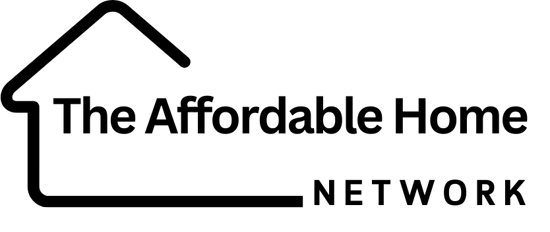

Available Programs for Home Buyers
Government-Backed Loan Programs
FHA Loans
Backed by the Federal Housing Administration
Low down payment requirement of 3.5% with a credit score of 580+
More flexible credit requirements compared to conventional loans
VA Loans
For eligible veterans, active duty service members, and surviving spouses
No down payment required
No mortgage insurance
USDA Loans
For rural and some suburban home buyers
No down payment required
Must meet income limits and purchase in eligible areas
Down Payment Assistance Programs
State and Local Programs
Most states offer down payment assistance through grants or low-interest loans
Typically for low to moderate income buyers
Requirements vary by location
National Programs
Chenoa Fund
Provides 3.5% or 5% down payment assistance as a forgivable loan
Can be used with FHA loans
Income and credit score requirements apply
National Homebuyers Fund
Offers grants or forgivable loans up to 5% of loan amount
Can be used with conventional, FHA, VA or USDA loans
Income limits apply but may be higher than some local programs
Other Programs:
Good Neighbor Next Door
For law enforcement, firefighters, EMTs, and teachers
Offers 50% off homes in revitalization areas
Must commit to living in home for 3 years
Fannie Mae HomePath ReadyBuyer
For buyers of Fannie Mae-owned foreclosed homes
Up to 3% in closing cost assistance
Requires completion of homebuyer education course
Employer-Sponsored Programs
Some employers offer down payment assistance or special mortgage programs
Check with your HR department for available options
When exploring these programs, be sure to compare the benefits with any restrictions or requirements. Many have income limits, geographic restrictions, or occupancy requirements. Working with a knowledgeable lender or housing counselor can help you find the best options for your situation.
How do state-specific programs differ from federal ones
State Programs
Administered by state housing finance agencies or local governments
Tailored to local housing markets and needs
Often have more flexible eligibility requirements
May offer larger assistance amounts in some cases
Typically have income limits based on local median incomes
Purchase price limits vary by local housing costs
Key Differences
Funding Sources:
State programs are funded through state budgets, housing trust funds, or bond sales
Federal programs are funded through Congressional appropriations
Assistance Types:
States often provide grants, forgivable loans, or low-interest second mortgages
Federal programs focus on insuring/guaranteeing mortgages with low down payments
Flexibility:
State programs can be more flexible and innovative to address local needs
Federal programs have more standardized guidelines nationwide
Availability:
State program funding may be limited and can run out
Federal programs are consistently available as long as borrowers qualify
Combining Programs:
Many state down payment assistance programs can be used in conjunction with federal loan programs like FHA or VA loans
Federal Programs
Available nationwide through federal agencies like FHA, VA, and USDA
Have consistent eligibility criteria across the country
Generally offer lower down payment requirements (0-3.5%)
Provide mortgage insurance or guarantees to lenders
May have higher income limits than some state programs
When seeking assistance, it's often beneficial to explore both state and federal options to find the best combination of programs for your situation.
How do eligibility requirements differ between state and federal programs
State Programs
Often have income limits based on local median incomes
Limits can vary significantly between states and even counties
For example, Alabama's AHFA Step Up program has a household income limit of $159,200
Federal Programs
Generally have higher income limits
May use national standards rather than local ones
For instance, some USDA loans use a national income limit of $105,000 for government loans
Credit Score Requirements
State Programs
Credit score requirements can vary widely
Some states have lower minimums, like 620 in Connecticut
Others require higher scores, such as Alabama's 640 minimum (or 680 for higher incomes)
Federal Programs
Often have more standardized credit score requirements
FHA loans, for example, allow scores as low as 580 with a 3.5% down payment
Property Location Restrictions
State Programs
May have specific geographic restrictions within the state
Can target certain areas for development or revitalization
Federal Programs
Some have nationwide availability (like FHA loans)
Others have specific location requirements (like USDA loans for rural areas)
First-Time Homebuyer (Definition)
State Programs
May have stricter definitions of "first-time homebuyer"
Some require that you've never owned a home before
Federal Programs
Often use HUD's definition, which includes those who haven't owned a home in the past three years
May also include single parents or displaced homemakers who previously owned with a spouse
Additional Requirements
State Programs
May require completion of state-specific homebuyer education courses
Can have state-specific purchase price limits
Might require working with approved in-state lenders
Federal Programs
Often have more standardized education requirements
Purchase price limits may be based on national or regional standards
Generally work with a wider range of lenders nationwide
Flexibility
State Programs
Can be more flexible to address specific local housing needs
May offer more varied types of assistance (grants, forgivable loans, etc.)
Federal Programs
Tend to have more rigid, standardized requirements
Focus more on mortgage insurance or guarantees rather than direct financial assistance
When considering these programs, it's important to research both state and federal options, as eligibility and benefits can vary significantly. Working with a knowledgeable local lender or housing counselor can help you navigate the specific requirements and find the best combination of programs for your situation.




